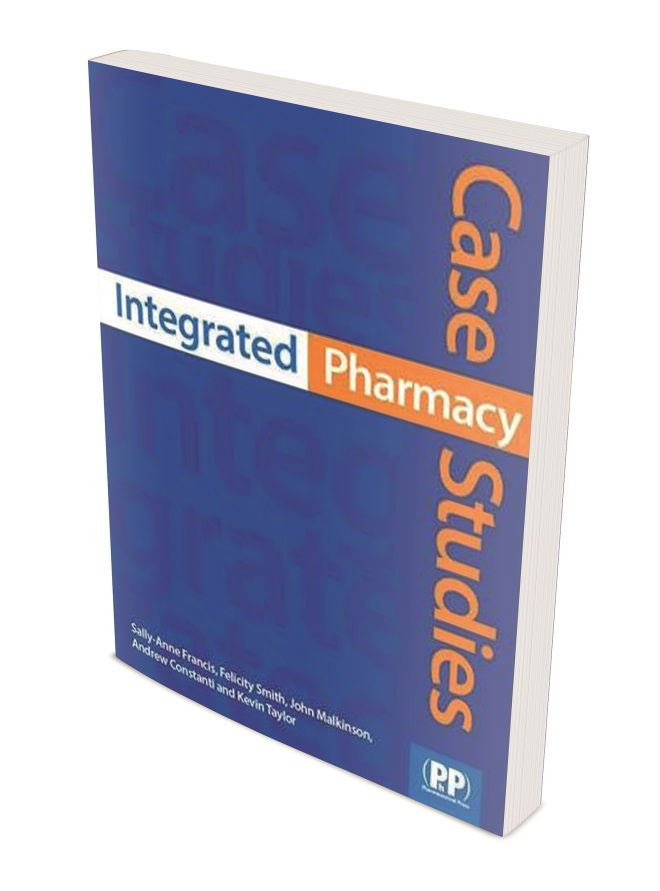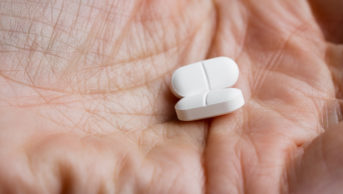
Shutterstock.com
Case study
Mr NH, a 55-year-old white man, presents with a query about use of painkillers. You ask him to explain the nature of his query about pain relief. He explains that he takes a regular soluble Solpadeine product to help with an old footballing injury (stiff neck/back injury/knee problem) but has noticed recently that he is getting more headaches, especially at weekends. He asks whether it could be migraine. On further discussion, Mr NH admits that he may be using the soluble analgesics too much but cannot remember how often. He asks if you could recommend something a bit stronger to clear up the pain. He has seen on the internet that Botox is now used.
Mr NH agrees to keep a diary of his symptoms and use of analgesics and returns in 14 days. On return, he presents a complex picture: he appears to use the Solpadeine Max Soluble daily and his weekend headaches are associated with nausea and aura/strange flashing lights.
Case discussion
This discussion, adapted from
Integrated Pharmacy Case Studies
[1]
, highlights some main questions to be considered in managing Mr NH’s case. For more information on the management of migraine, including diagnosis and treatment, please refer to ‘Migraine management’.
What is the rationale for the combined use of analgesics?
Mr NH is taking Solpadeine M
ax Soluble, one of a number of proprietary combined products containing paracetamol, codeine and caf
feine.
Although the analgesic mechanism of action of paracetamol is not fully understood, it is recognised to inhibit the cyclooxygenase (COX) enzymes, which are involved in the biosynthesis of prostaglandins, particularly the COX-3 isoform in the central nervous system (CNS). More recent research suggests that the reactive N-acetyl-p-benzoquinoneimine metabolite of paracetamol may interact with one or more protein targets involved in pain signalling. Codeine (a prodrug) is an opiate analgesic, the metabolites of which, notably morphine, exert their analgesic effect through activation of central µ-opioid receptors. Caffeine is a xanthine alkaloid CNS stimulant that acts as a competitive inhibitor at adenosine receptors. It may offer relief in migraine headache by causing vasoconstriction in cranial blood vessels and/or by increasing the rate at which co-administered analgesics are absorbed.
Why should pain profiles be recorded?
H
eadache diaries can be used either as an aid to accurate diagnosis or as support management of the condition. Downloadable diaries are available from The Migraine Trust[2]
, and both ann
ual and monthly examples at the National Migraine Centre[3]
.
What are the potential secondary causes of headache?
Some potentially serious secondary causes of headache include meningitis, subarachnoid haemorrhage, giant cell temporal arteritis, glaucoma, carbon monoxide poisoning and conditions causing raised intracranial pressure — intracranial tumours.
Sinusitis is not considered serious unless it fails to respond to usualover-the-counter (OTC) medication.
What are the available non-drug options for Mr NH?
The British Association for the Study of Headaches[4]
lists the following, predominantly as adjuvant therapy:
- Physical therapy: improved physical fitness may have a positive benefit. Physiotherapy by a specialist where there is a specific indication such as neck dysfunction. Dental treatment to correct malocclusion is of unproven benefit but may improve temporomandibular joint dysfunction. Acupuncture has some benefit;
- Psychological therapy: relaxation therapy, stress reduction and coping strategies are first line when they target a specific underlying indication, which limits the success of migraine treatments;
- Alternative remedies: OTC homeopathic medicines are of no proven value. Reflexology also has no scientific basis.
What are the indicators for medication-overuse headache?
Although the term ‘medication-overuse headache’ (MOH) was included in the International Headache Society classification in 2004[5]
, it is also called chronic daily headache (CDH) in the neurology literature.
The term MOH usefully highlights the potential role of regular intake of medication (including all medicines used for treating headache) in causing the condition. The current definition is a headache that is present on ≥15 days of the month and has developed or worsened while the patient has been regularly using analgesic or anti-migraine medicines for more than three months.
The frequency of analgesic consumption is an indicator of the condition MOH. As a guide, MOH may be an indication for people whose headache has developed or worsened over a three-month period while using the following medication:
- Triptans (5HT1B/1D receptor agonists: sumitriptan, zolmitriptan), opioids, ergot alkaloids (ergotamine) or combination analgesic medications on ≥10 days/month, or;
- Paracetamol, aspirin or a NSAID, either alone or in any combination, on ≥15 days/month.
People with MOH often describe a dull nagging ache that may be present all day, being the first thing that they are aware of on waking, and it never seems to go away. The character of the headache will vary from a dull ache, to a tight pressure, to a dull throb. They will often comment that ‘no matter what I take, the headache never goes away’ or ‘I can’t do without my painkillers’.
Carl Martin PhD, GPhc registrant, MRPharmS, PGCHE is a senior clinical teacher at University College London School of Pharmacy.
References
[1] Integrated Pharmacy Case Studies by Sally-Anne Francis, Felicity Smith, John Malkinson, Andrew Constanti and Kevin Taylor. Pp 456 £39.99. London: Pharmaceutical Press; 2015. ISBN 978 0 85369 884 5
[2] The Migraine Trust. Migraine diary. Available at: http://diary.migrainetrust.org/ (accessed September 2015).
[3] National Migraine Centre. Migraine and headache diary. Available at: www.nationalmigrainecentre.org.uk/migraine-and-headaches/migraine-and-headache-diary/ (accessed September 2015).
[4] British Association for the Study of Headache (2010). Guidelines for all healthcare professionals in the diagnosis and management of migraine; tension-type headache; cluster headache; medication-overuse headache. Available at: www.bash.org.uk (accessed October 2013).
[5] International Headache Society, Headache Classification Subcommittee (2004). International Classification of Headache Disorders, 2nd ed:(ICHD-II). London: International Headache Society.



